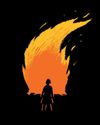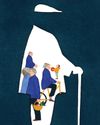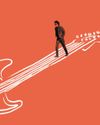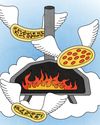As a psychotherapist, Irvin Yalom has helped others grapple with their mortality. Now he is preparing for his own end.

ONE MORNING IN MAY, the existential psycho therapist Irvin Yalom was recuperating in a sunny room on the first floor of a Palo Alto convalescent hospital. He was dressed in white pants and a green sweater, not a hospital gown, and was quick to point out that he is not normally confined to a medical facility. “I don’t want [this article] to scare my patients,” he said, laughing. Until a knee surgery the previous month, he had been seeing two or three patients a day, some at his office in San Francisco and others in Palo Alto, where he lives. Following the procedure, however, he felt dizzy and had difficulty concentrating. “They think it’s a brain issue, but they don’t know exactly what it is,” he told me in a soft, gravelly voice. He was nonetheless hopeful that he would soon head home; he would be turning 86 in June and was looking forward to the release of his memoir, Becoming Myself, in October.
Issues of The Times Literary Supplement and The New York Times Book Review sat on the bed, alongside an iPad. Yalom had been spending his stay watching Woody Allen movies and reading novels by the Canadian writer Robertson Davies. For someone who helped introduce to American psychological circles the idea that a person’s conflicts can result from unresolvable dilemmas of human existence, among them the dread of dying, he spoke easily about his own mortality.
Diese Geschichte stammt aus der October 2017-Ausgabe von The Atlantic.
Starten Sie Ihre 7-tägige kostenlose Testversion von Magzter GOLD, um auf Tausende kuratierte Premium-Storys sowie über 8.000 Zeitschriften und Zeitungen zuzugreifen.
Bereits Abonnent ? Anmelden
Diese Geschichte stammt aus der October 2017-Ausgabe von The Atlantic.
Starten Sie Ihre 7-tägige kostenlose Testversion von Magzter GOLD, um auf Tausende kuratierte Premium-Storys sowie über 8.000 Zeitschriften und Zeitungen zuzugreifen.
Bereits Abonnent? Anmelden

JOE ROGAN IS THE MAINSTREAM MEDIA NOW
What happens when the outsiders seize the microphone?

MARAUDING NATION
In Trumps second term, the U.S. could become a global bully.

BOLEY RIDES AGAIN
America’s oldest Black rodeo is back.

THE GENDER WAR IS HERE
What women learned in 2024

THE END OF DEMOCRATIC DELUSIONS
The Trump Reaction and what comes next

The Longevity Revolution
We need to radically rethink what it means to be old.

Bob Dylan's Carnival Act
His identity was a performance. His writing was sleight of hand. He bamboozled his own audience.

I'm a Pizza Sicko
My quest to make the perfect pie

What Happens When You Lose Your Country?
In 1893, a U.S.-backed coup destroyed Hawai'i's sovereign government. Some Hawaiians want their nation back.

The Fraudulent Science of Success
Business schools are in the grips of a scandal that threatens to undermine their most influential research-and the credibility of an entire field.